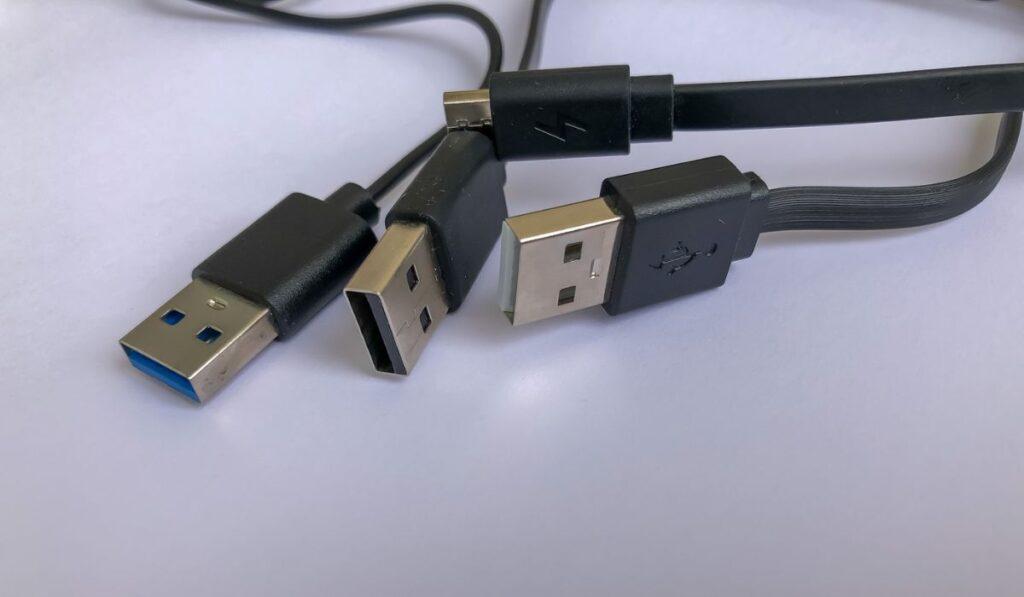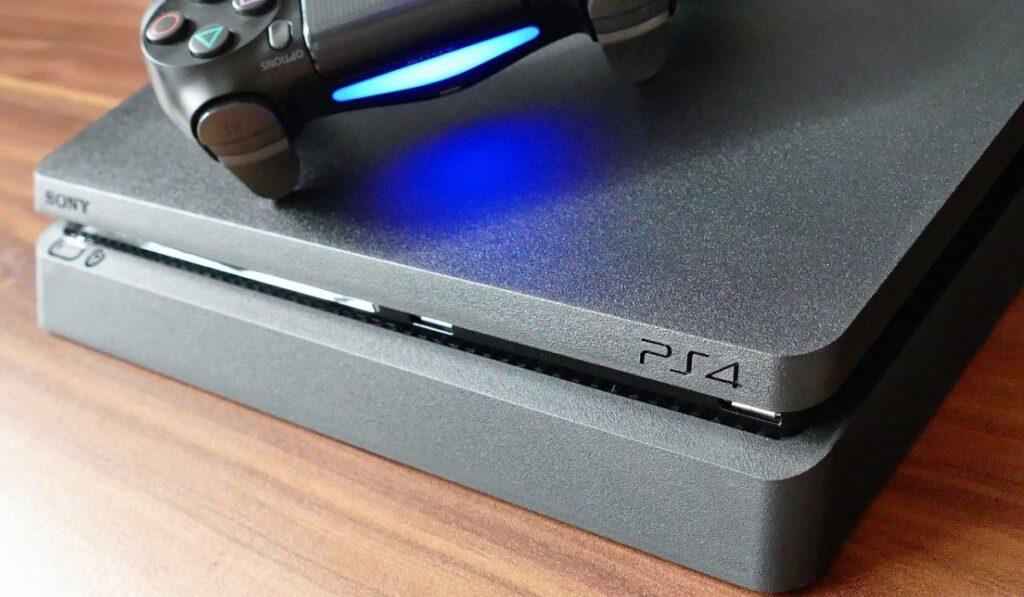USB 3.0 on the PS4
USB 2.0 and 3.0 can be confusing if you aren’t up-to-date with the differences between the two connectors. Using the correct USB type can improve your data transfer rates. Consoles like the PlayStation 4 require compatible USB connections. So, does the PS4 have USB 3.0?

Does the PS4 have USB 3.0 ports?
The standard PlayStation 4 has two USB 3.0 ports on the front of the console. The PS4 Pro has two USB 3.0 ports, one on the front and one on the back. USB 3.0 offers faster transfer rates than USB 2.0 and is much more powerful. You must use a USB 3.0 compatible external HDD when using the PS4.
Don’t worry if you’re still getting the hang of USB 3.0. There’s a lot to consider, especially if you are connecting external hard drives to your PS4. Let’s take a deeper look at everything you need to know about USB 3.0 on the PS4.
Key Takeaways:
- The PlayStation 4 (PS4) has two USB 3.0 ports on the front of the console, while the PS4 Pro has an additional USB 3.0 port on the back.
- USB 3.0 offers faster transfer rates compared to USB 2.0, allowing for quick and efficient data transfers on the PS4.
- USB hubs can be used to expand the number of available ports on the PS4, but it’s recommended to directly connect external storage devices to the USB 3.0 ports for optimal functionality.
What Is USB 3.0?
USB 3.0 (On Amazon) was released around November 2008. USB stands for Universal Serial Bus (USB). Nearly all modern-day computers and electronics produced today support USB 3.0, which is typically called SuperSpeed USB.
Devices that use USB 3.0 can transmit data at a maximum rate of 5 Gbps, but most devices use 3,200 Mbps as it’s more reasonable for daily use.
This is much different than older USB standards, like USB 2.0, which can transfer data at a maximum of 480 Mbps. Even older USB standards, like USB 1.1, can only transfer data at a maximum of 12 Mbps.
How many USB 3.0 Ports does the PS4 have?
The PS4 console typically features 2 USB 3.0 ports, just like its predecessors in the PlayStation lineup. These ports are conveniently located on the front of the console, similar to the placement on the PS2 and PS3.
If you find yourself needing to connect more than two devices to your console, you can make use of a USB hub or opt for wireless connections via Bluetooth.
Which Devices are USB 3.0 Compatible with the PS4?
USB Hubs
USB 3.0 ports are compatible with USB hubs, allowing you to expand the number of available ports on your console. However, when connecting an external storage device, it is recommended to directly connect it to the USB ports to ensure proper functionality as a USB storage device.
It’s important to note that USB hubs do not support virtual reality devices; these devices need to be directly linked to the USB ports, following specific requirements.
PS4 Controllers and External Storage Drives
Wired controllers can be connected to the USB 3.0 ports if you prefer not to use them wirelessly. Additionally, the USB ports enable fast charging of the controller’s batteries, as it is twice as fast as using USB 2.0.
USB 3.0 can also be utilized to connect external storage devices, such as USB flash drives, external hard drives, or external SSDs.
Keyboard, Mouse, and other Accessories
For various tasks like web browsing, navigation, and text entry, you can connect a mouse and keyboard to your PS4 console via USB. Simply plug them in, navigate to your device’s settings, select the keyboard, and follow the setup instructions. Other compatible accessories include PlayStation VR, headphones, and speakers.
Functions of USB 3.0 on the PS4
File Transfer and Data Backup
USB 3.0 facilitates the transfer of files between consoles using a USB drive, provided you have sufficient transfer speed and the appropriate hard drive. It’s important to ensure the USB drive is compatible with USB 3.0. Note that not all USB drives will work with the ports, including the rear USB port, and you may encounter an error message after selecting the format option.
Alternatively, you can use a USB cable to transfer data and files from your computer to the console. USB 3.0 is also a valuable tool for gamers to back up their console data on USB drives or other external hard drives, ensuring data recovery in the event of data loss.
Updating Console System Software
To update the operating system software on your console, you’ll need to download the necessary files onto your computer and then transfer them to your PS4 using a medium such as a USB device.
USB 3.0 ports enable effective system software updates, provided the external device is compatible with the ports.
By leveraging the capabilities of USB 3.0, PlayStation 4 users can enjoy a range of functionalities and enhance their gaming experience through seamless connectivity and convenient data management.
Properties of USB 3.0 on the PS4
Transfer Rate
USB 3.0 offers an impressive data transfer rate of approximately 625MB/s, making it significantly faster than previous USB versions. While it may not match the speed of USB 3.1 or 3.2, the transfer rate of USB 3.0 is more than sufficient for the needs of the PS4. Rest assured that data transfers are swift and efficient with USB 3.0.
Bi-Directional Capability
USB 3.0 ports on the PS4 are bi-directional, allowing for simultaneous reading and writing of data. This means you can perform multiple operations without having to wait for one task to finish before starting another. For example, you can upload data to your console while simultaneously retrieving different files from it. The bi-directional nature of USB 3.0 enhances multitasking capabilities on your console, boosting overall efficiency.
With its impressive transfer rate and bi-directional functionality, USB 3.0 on the PS4 provides a seamless and efficient data transfer experience, ensuring that you can quickly access and manage your files without any delays.
USB 2.0 vs. 3.0: What’s the Difference?
The most significant difference between USB 3.0 and 2.0 is data transfer rates. That said, there are some smaller differences between the two, including connectors, compatibility, and power. Let’s take a deeper look at the significant differences between USB 3.0 and 2.0.
USB 3.0 Is Faster
USB 2.0 provides transfer rates of around 480 Mbps. USB 3.0 can transfer data around 3,200 – 4,800 Mbps, making it much faster. The faster speeds of USB 3.0 make it worthwhile for transferring or backing up large amounts of information, like the information stored on external hard drives.
Remember that these speeds are under ideal conditions, and the rates are different with everyday use.
USB 2.0 Has Fewer Connector Wires
USB 2.0 has four connector wires, while USB 3.0 has nine connector wires. The additional wires increase the speed and bandwidth of the cord and add to the efficiency of USB 3.0.
USB 3.0 Has More Power
USB 3.0 offers more power and functions at more efficient rates than USB 2.0. USB 3.0 is preferred for larger transfer rates and high data use devices.
USB 3.0 Is Backwards Compatible
USB 3.0 ports are entirely backward compatible with older models. This means USB 3.0 ports work with other USB variants, like 2.0. You can plug a USB 2.0 into a 3.0 port and have it work without issue. That said, if you connect a USB 3.0 drive to a USB 2.0 port, it will be restricted to the maximum data transfer rates of USB 2.0.
USB 3.0 Is Blue
You can tell the difference between USB 3.0 and 2.0 by looking at the color of the inside ports. USB 2.0 has a black interior, while USB 3.0 has a blue interior.
How to Connect a PS4 to a USB 3.0
So, now that you understand some of the differences between USB 3.0 and 2.0, how can you connect your PlayStation 4 to USB 3.0? Let’s take a look at what you need to know.
- The standard PlayStation 4 has two USB 3.0 ports on the front of the console.
- The PlayStation 4 Pro has two USB 3.0 ports on the front and an additional port on the backside.
You can simply connect your USB 3.0 device to one of the ports on your PlayStation 4. That said, USB 2.0 might only work on the backside of the PlayStation 4 Pro, according to some gamers.
How to Connect an External HDD to Your PlayStation 4

You may need to connect an external hard drive to your PlayStation 4 via USB 3.0. Here’s how you can get started:
- The PlayStation 4 is compatible with any external HDD with a USB 3.0 connection.
- The PlayStation4 is compatible with drives between 256GB and 8TB of storage space.
- The external HDD must have zero additional features and be a plain drive.
- Once you connect the compatible drive, you must go to Settings > Devices > USB Storage Devices > Format as Extended Storage.
- It should take less than a minute for the external HDD to finish formatting. Afterward, you can use it as usual.
Conclusion
Understanding the differences between USB 2.0 and USB 3.0 is crucial when it comes to choosing the right USB type for your needs. The PlayStation 4 requires compatible USB connections, and fortunately, it does have USB 3.0 ports. These ports offer faster transfer rates and increased power, making them ideal for connecting various devices to your console.
USB 3.0 on the PS4 provides numerous benefits and functionalities. With two USB 3.0 ports on the standard PS4 and an additional port on the PS4 Pro, you have ample connectivity options. You can connect external storage drives, controllers, keyboards, mice, and other accessories, expanding the capabilities of your console.
USB 3.0 boasts impressive properties, such as its fast transfer rate of approximately 625MB/s and bi-directional capability, enabling simultaneous reading and writing of data. These features enhance efficiency and multitasking on the PS4, allowing for seamless data management.
In conclusion, USB 3.0 is a valuable asset for PS4 users, offering enhanced connectivity, faster data transfers, and increased efficiency. Whether you’re transferring files, updating software, or connecting various peripherals, USB 3.0 ensures a smooth and enjoyable gaming experience.